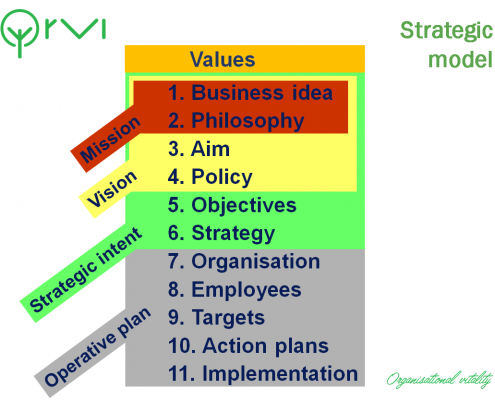Avoid the typical mistake that HR people make in regarding strategy
For years, we’ve been talking about strategic HRM and about the need for HR experts to become partners to leaders and managers in organisations. When we look at the reality we can see, that we are not very successful in taking that position. In Mercer’s 2016 Global Talent Trends Study only 4% of HR professionals said that HR is perceived as a strategic business partner by the top management in their organisations.
This information can comfort us, other HR people are not much better than we are. However, we have to ask ourselves what are we getting wrong.
ORVI Navigator is an HRM process model that helps research the problem. To anybody that takes a look at the model it is obvious that in each segment we need to have processes in place that at least cover the minimal day to day needs.
Nevertheless, I’d like to point out an important detail. ORVI Navigator consists of boxes and arrows. We know a lot about most of the boxes and we grant them a great deal of attention. The challenge is the arrows. Only the arrows – i.e. the links between the processes and the information flow among them – enable the meaningful performance of the whole.
Speaking of the arrows, one of them stands out in its importance. That is the arrow symbolising the link between strategic directions of the organisation and the HR processes. Here we often find the weakest link.
Too many HR leaders and experts jump to building the HR processes without knowing and understanding the business strategy of the company. In that way, the HR strategy and the HR processes are not congruent with the strategic needs of the company.
Only when the HR leader or HR professional dives into the business strategy, when they understand the priorities and the competitive advantage of the company and the general plan for competing in the market can they become a partner to the management. Only then can they adapt their thinking and instead of putting people first, put the strategy first. The people (employees) are important, without any doubt, but strategically important are only to the extent they directly support the execution of the business strategy i.e. to the extent they are involved in delivering the competitive advantage, which our ability to compete is based on.
Taking the described point of view, we can see that not all the employees play strategically important roles. Such a realisation caries important practical consequences.






